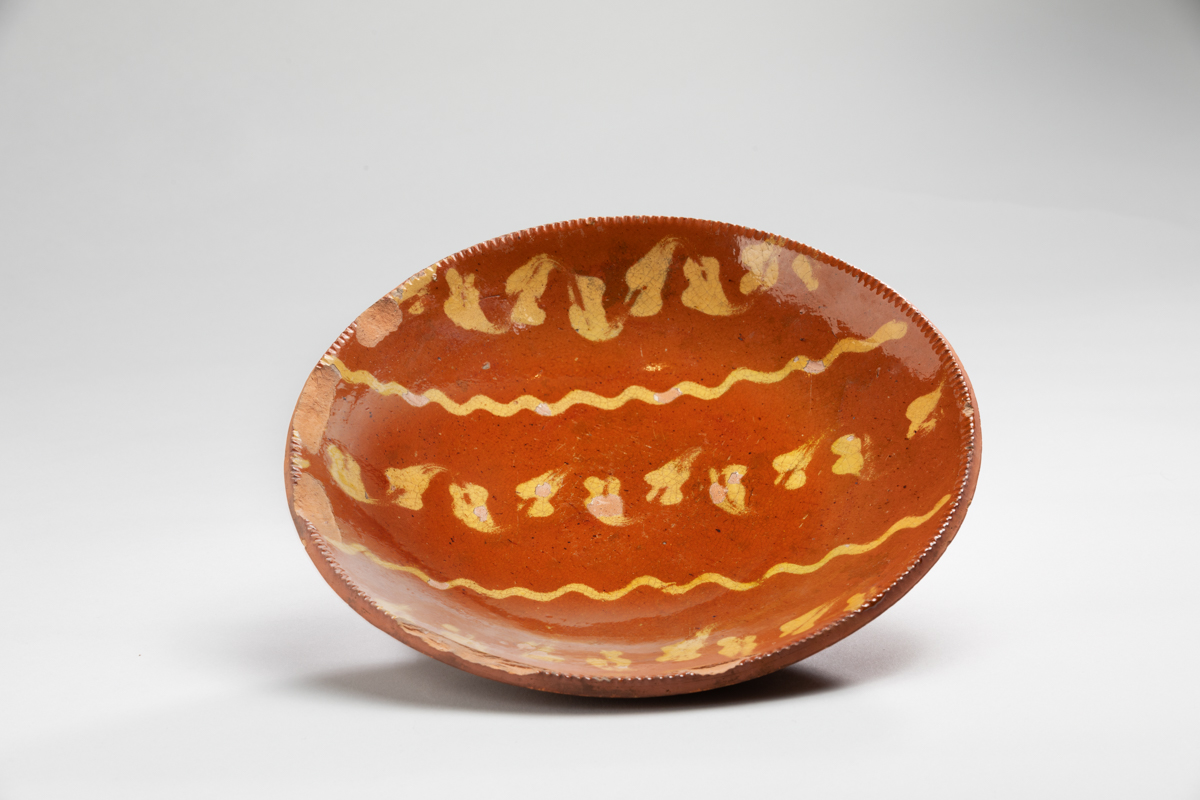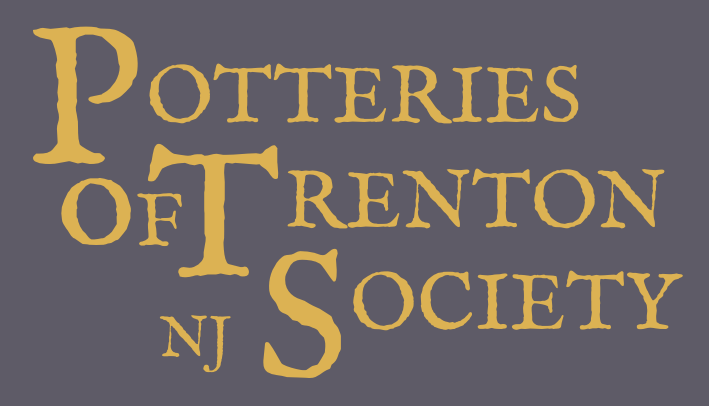
From the 1780s through 1868, three generations of the McCully family operated at the heart of Trenton’s redware pottery industry producing mostly wheel-thrown utilitarian vessels for local and regional consumption. At first engaged in small-scale handcraft production, becoming more prolific as the 19th century wore on, the McCullys were eventually overwhelmed in the 1850s and 1860s by the city’s newly established industrial potteries as these manufacturing behemoths churned out mold-made yellowware, Rockingham ware and ironstone china for the growing national market.
At least four different locations in the city can be identified as the sites of McCully potteries. Joseph McCully (c.1757-1820), a carpenter by trade, moved to Trenton from Mount Holly and first set up a pottery in the mid-1780s on the western edge of town near the Pennington Avenue crossing of Petty’s Run. Among his apprentice workers was his nephew, Joseph McCully, Jr. (1772-1857). Within a year or two, this operation was moved closer into town to the rear of what later became known as Lamb’s Tavern on Warren Street, just below where the Battle Monument stands today. In the later 1790s, Joseph, Sr. ran into financial difficulty and sold this pottery in 1800 to Jacob Hester, who kept both the tavern and pottery in business for another two or three decades. The two Joseph McCullys then opened up another pottery further down Warren Street, next door to the Union Inn, in 1800-01. This facility operated until around 1815, when the opening up of Union (today’s Bank) Street, caused its relocation a few hundred feet along the south side of the new street to the west bank of Petty’s Run.
The McCully redware factory at this final location on Union Street stayed in business until 1868, operated by Joseph, Jr.’s sons, John Stiles McCully (1799-1889) and Richard Howell McCully (1802-1868). In the 1860 industrial census, the McCully’s Bank Street pottery reported producing “assorted red ware” valued at $900 using a single kiln and the labor of two male employees (quite possibly the McCullys themselves). The pottery’s capital investment was given as $2,700 in stark contrast to that of three contemporary industrial potteries, each of which boasted an investment of $25,000.
Platter, red earthenware with slip decoration under clear lead glaze on front, coggled rim, made by Joseph McCully (1757-1820) or his nephew Joseph McCully (1771-1872), 11.6 in W. The traditional nature of this pottery’s production makes it difficult to date objects precisely. McCully and his nephew used the same marks. Collection of the New Jersey State Museum, CH1970.212. Photograph by Ricardo Barros.
— Richard W. Hunter
Photographed as part of a collaborative project with the New Jersey State Museum. The project was made possible, in part, by a grant from the Mercer County Division of Culture and Heritage, in partnership with the New Jersey Historical Commission, Division of Cultural Affairs/ Department of State.
